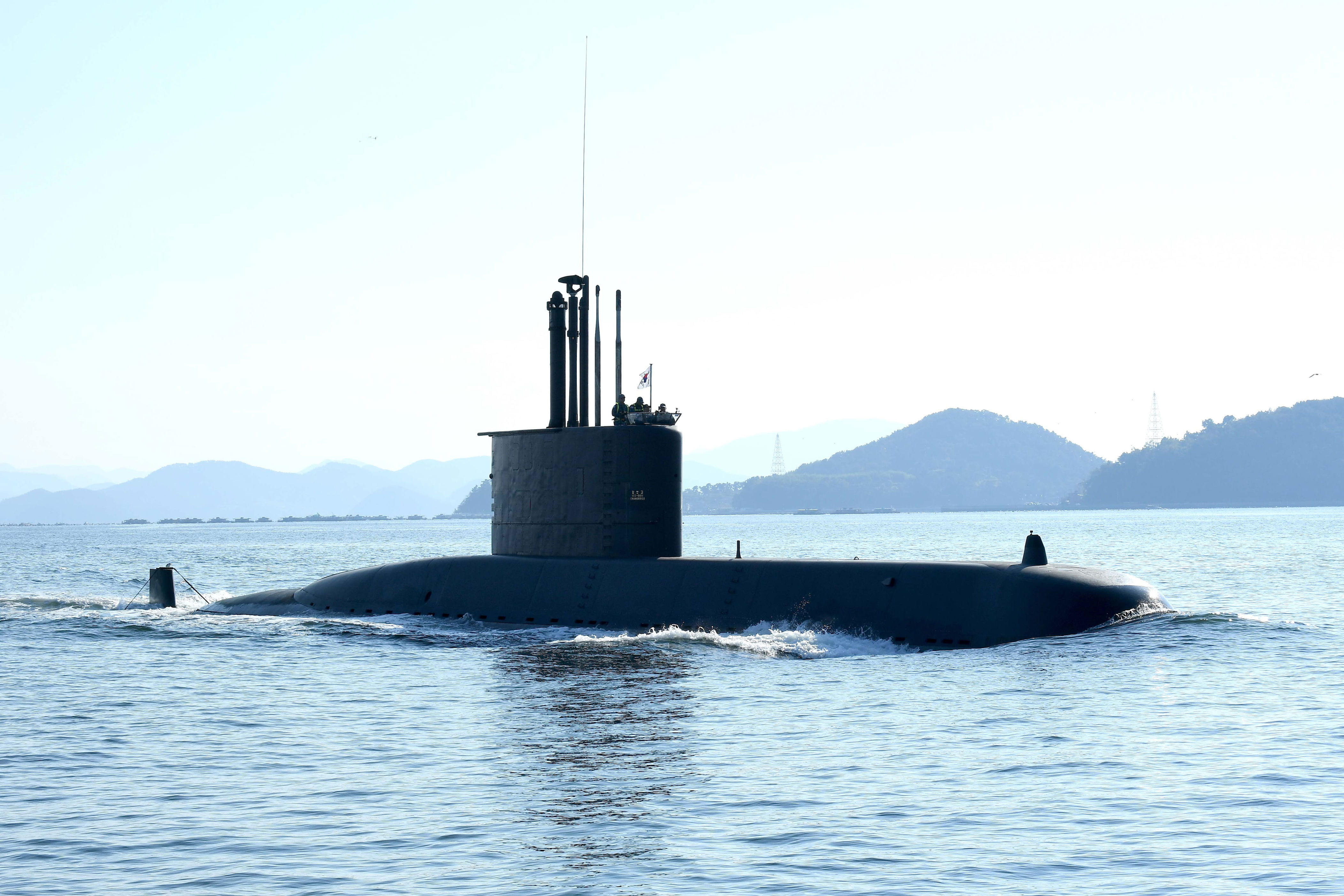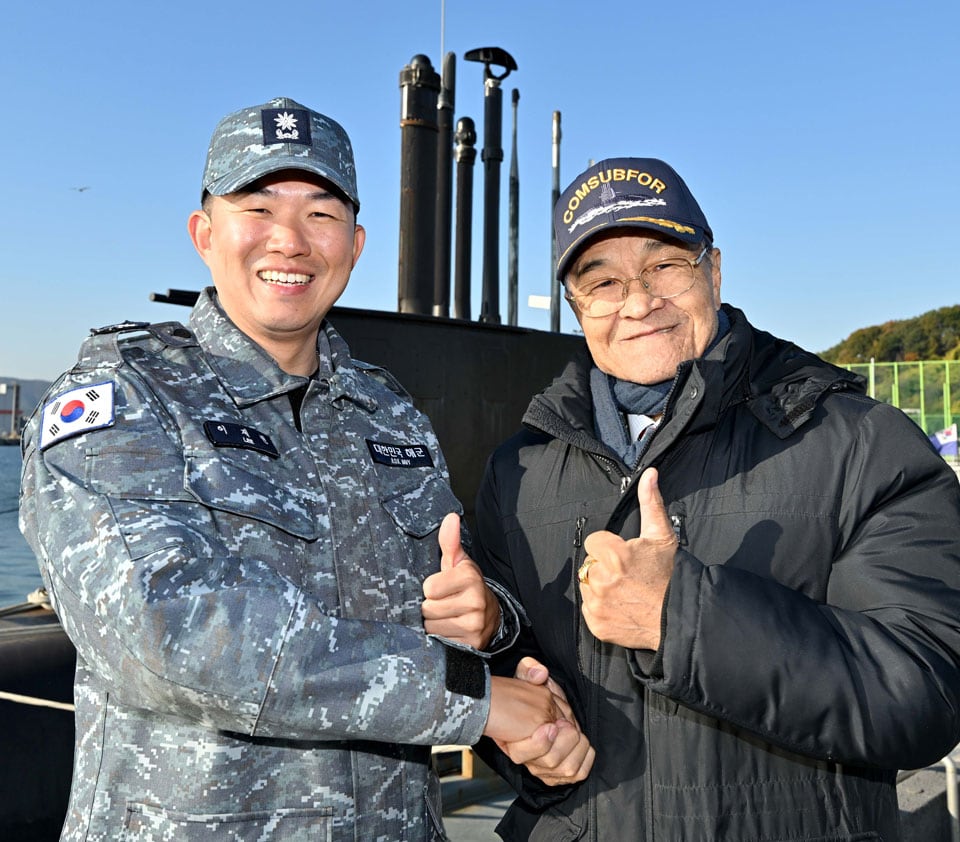The first submarine of the South Korean Navy, the Jangbogo (SS-061), which marked the beginning of the "submarine era" for the cou...

The first submarine of the South Korean Navy, the Jangbogo (SS-061), which marked the beginning of the "submarine era" for the country, concluded its last journey on the 19th at Jinhae Naval Base in Changwon, South Gyeongsang Province, before retiring next month. It has been 34 years since the submarine was acquired by the South Korean Navy from Germany in 1992. Throughout its service, the Jangbogo traveled roughly 342,000 nautical miles (approximately 633,000 km), which is more than 15 times around the globe, carrying out its duty to protect the nation.
The Jangbogo left Jinhae Naval Base, which serves as the headquarters for the Navy's Submarine Flotilla, in the afternoon and carried out its last journey for approximately two hours. Four individuals who had traveled to Germany to obtain the submarine—such as An Byung-koo, 76 years old, the first commander, along with former defense officers and chief petty officers—came aboard the ship to say goodbye. When the Jangbogo returned to the base, submarines moored at the harbor collectively sounded their horns in celebration. An, the former leader, said to this newspaper, "As the submarine came back to Jinhae Naval Base after its final trip, memories of previous returns from training exercises came clearly back. Seeing the Jangbogo, which successfully finished its 34-year mission, made me feel proud, happy, and thankful, as if it were my own child."

The launch of the Jangbogo marked a significant achievement in the South Korean Navy's efforts to explore the "underwater domain." North Korea had already started operating more than 10 submarines in the 1980s, having obtained them from the Soviet Union in the 1960s. In 1987, South Korea placed an order for a 1,200-ton diesel submarine from Germany's HDW shipyard and aimed to build submarines domestically by acquiring their design and technology. The first submarine was named Jangbogo, honoring Jang Bogo, a seafaring pioneer from the Unified Silla era who founded the Cheonghaejin naval base. As a result, eight Jangbogo-class (SS-I) submarines were built locally, allowing South Korea to establish submarine manufacturing capabilities. By the 2010s, South Korea had gained the ability to independently design and produce 3,000-ton submarines and is currently working on constructing nuclear-powered submarines.
Several naval personnel were sent to Germany beginning in 1990 to undergo submarine operation training. The Jangbogo, which was launched in 1991, was eventually obtained by the Navy in October 1992. It was transported to South Korea on a cargo ship and was commissioned in June 1993.
Submarines encounter various dangers when submerging and resurfacing. Therefore, the Submarine Flotilla follows the safety motto: "If you dive 100 times, surface 100 times." The Jangbogo, as the Navy's first submarine, followed this rule until its final days. An stated, "Submarines are extremely hazardous, and crew members put their lives at risk every time they come up after diving. We experienced numerous life-threatening situations while operating the vessel."
The Jangbogo was the first submarine to take part in significant international exercises, such as the Rim of the Pacific (RIMPAC) exercise, the South Korea-U.S. joint anti-submarine warfare drill, and the Western Pacific submarine escape and rescue training. Even in a training situation, during the 2004 RIMPAC exercise, the Jangbogo virtually attacked more than 30 ships, including a U.S. aircraft carrier, with simulated torpedoes without ever being detected. The Navy's operational skills using a 1,200-ton diesel-powered submarine were highly commended. At that time, the U.S. commander reportedly said, "The Jangbogo was very impressive."
Jangbogo-class submarines usually carry out underwater operations for around 3–4 weeks while at sea. Each crew member has a living area of approximately 1.1 pyeong (about 3.6 square meters), which is narrower than a prison solitary cell (1.63 pyeong). Due to a lack of beds, three crew members share two beds through the "Hot Bunking" system, where one crew member uses the bed that is still warm from another. Showers are not allowed to save water, and even brushing teeth is limited. To prevent noise that might expose their location, crew members use a water gun to clean themselves after using the toilet. A senior officer who served on the Jangbogo-class submarine stated, “Our troops have protected the seas for many years under such tough conditions.” He added, “It is becoming more challenging to recruit submarine crew members. Incentives like higher pay and better promotion opportunities should be offered to encourage them.”
After finishing its last journey, the Jangbogo will be cleaned up and supplied before it is retired next month. Although the usual lifespan of a Jangbogo-class diesel-powered submarine is approximately 25 years, the Jangbogo is said to still be able to perform underwater operations because of the military's careful maintenance. Certain reports indicate that the submarine might be transferred to nations interested in buying domestically made submarines.



